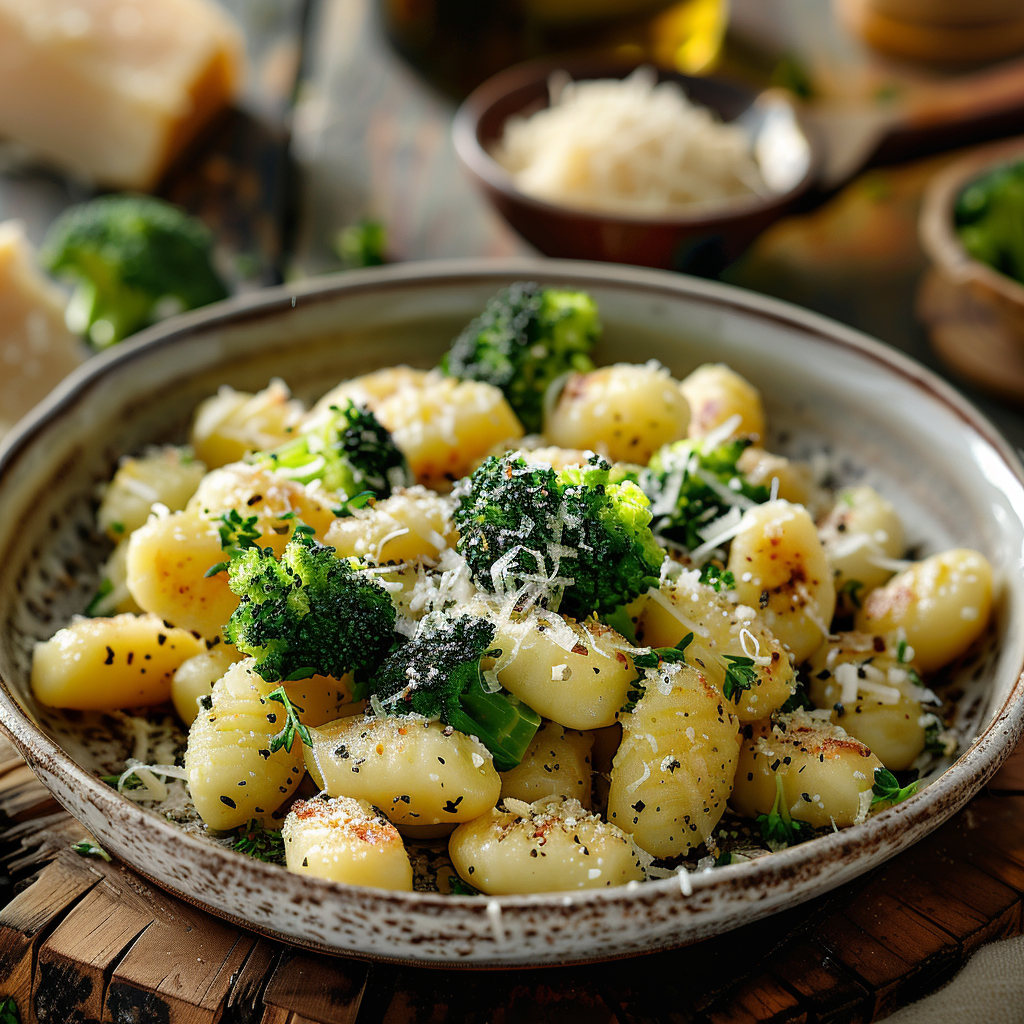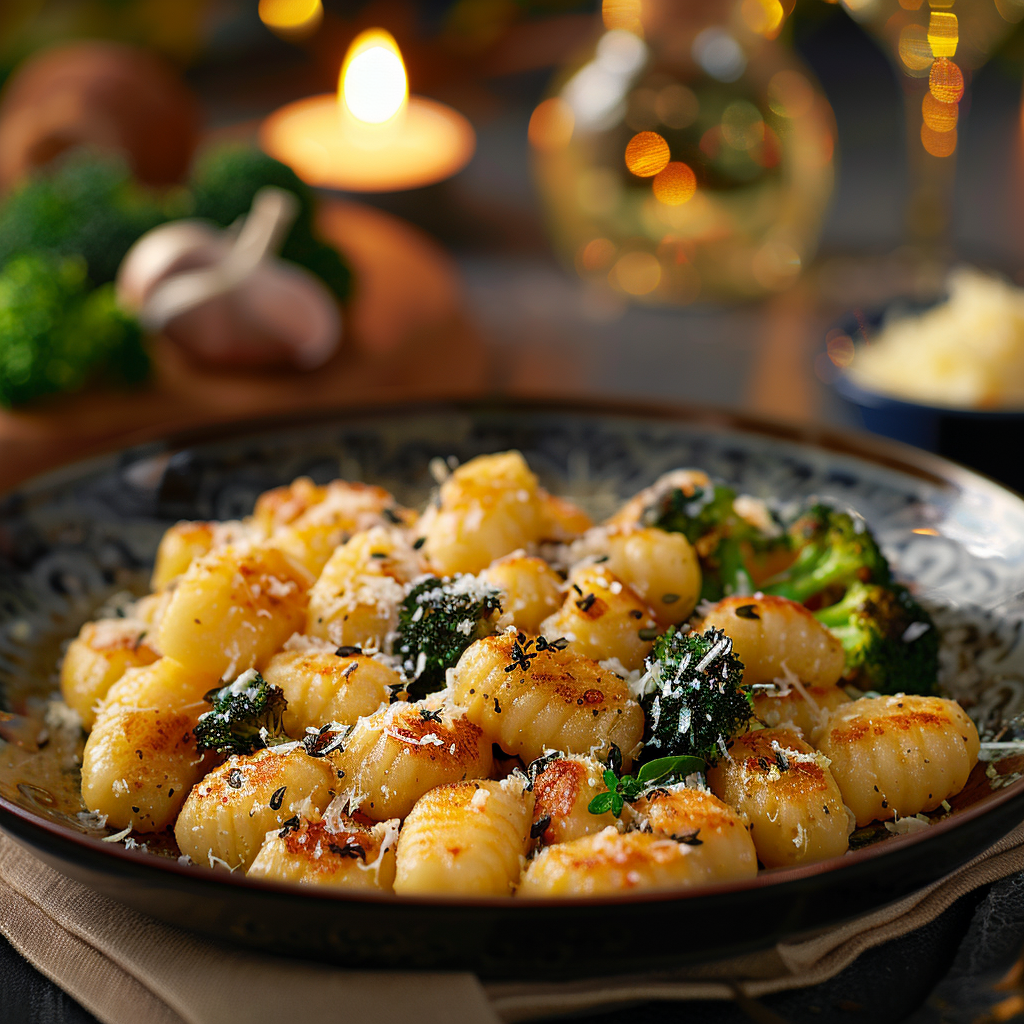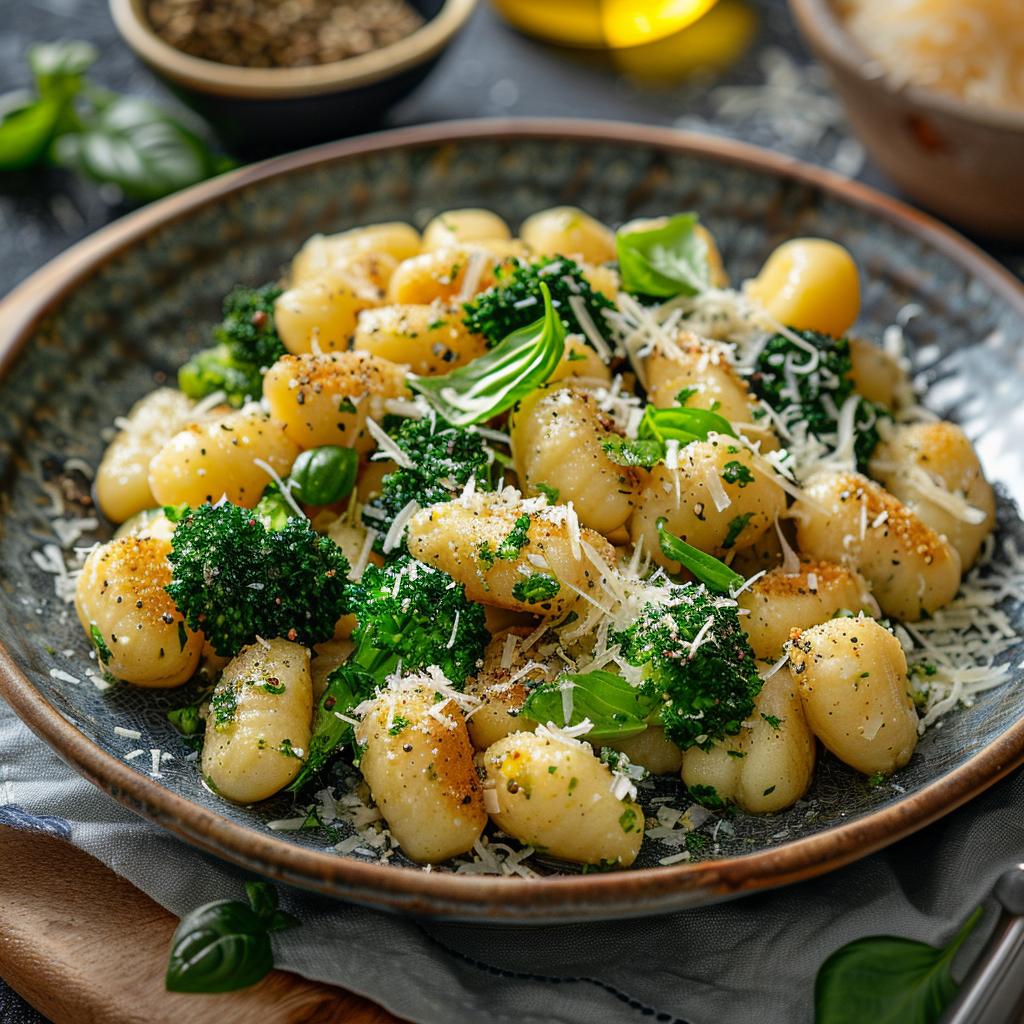Why Gnocchi Noodles Are My Go-To Comfort Food
There’s something magical about biting into a soft, pillowy gnocchi noodle. It feels like a warm hug on a plate. I still remember the first time I tried making them myself. My kitchen was a mess of flour clouds and sticky dough, but when those little dumplings floated to the top of the boiling water, I knew I had created something special. Whether you’re new to gnocchi noodles or already love them, this recipe will show you how to make them shine.
A Little History Behind Gnocchi Noodles
Gnocchi noodles have been around for centuries, tracing their roots back to Italy. Some say they were born out of necessity, using simple ingredients like potatoes, flour, and eggs. Over time, they’ve become a beloved dish worldwide. In my family, we always joked that gnocchi noodles are “Italy’s answer to mac and cheese.” They’re just as comforting but with a touch of rustic charm. I’ve tested countless variations, from classic potato-based ones to modern twists like ricotta gnocchi, and trust me, there’s no wrong way to enjoy them.
Why You’ll Fall in Love with This Recipe
This gnocchi noodles recipe is perfect for anyone who loves hearty, satisfying meals without spending hours in the kitchen. The texture is light yet filling, and the flavors pair beautifully with almost any sauce. Plus, it’s versatile! Whether you’re craving a creamy gnocchi noodles mac and cheese or a simple garlic butter sauce, this recipe has got you covered.
Perfect Occasions for Gnocchi Noodles
Think of gnocchi noodles as your secret weapon for impressing guests. They’re great for dinner parties, cozy date nights, or even a lazy Sunday lunch. I once served them at a holiday gathering, and everyone raved about how unique and delicious they were. Trust me; these little dumplings can turn any meal into a celebration.
Ingredients for Homemade Gnocchi Noodles
- 2 large russet potatoes (about 1 pound)
- 1 cup all-purpose flour, plus extra for dusting
- 1 large egg
- 1/2 teaspoon salt
- Freshly ground black pepper, to taste
Substitution Options
- For gluten-free gnocchi, swap regular flour with almond flour or a gluten-free blend.
- If you don’t have russet potatoes, Yukon Golds work well too.
- Swap the egg with a flaxseed mixture for a vegan version.
Preparation Section
Step 1: Cook the Potatoes
Start by boiling your potatoes until they’re fork-tender. This step is crucial because overcooked potatoes can make your dough too sticky. Once cooked, let them cool slightly before peeling. Pro tip: Use a potato ricer to mash them—it gives the dough a smoother texture.
Step 2: Make the Dough
In a large bowl, combine the mashed potatoes, flour, egg, salt, and pepper. Mix gently with your hands until the dough comes together. Be careful not to overwork it; otherwise, your gnocchi noodles might turn out tough instead of tender. Chef’s tip: If the dough feels sticky, add a bit more flour, one tablespoon at a time.
Step 3: Shape the Gnocchi
Roll the dough into long ropes about 1-inch thick, then cut them into small pieces. To give them their signature ridges, press each piece lightly against the tines of a fork. These ridges help the gnocchi sauce cling better, ensuring every bite is packed with flavor.
Step 4: Cook the Gnocchi
Bring a large pot of salted water to a boil. Drop the shaped gnocchi in batches, cooking until they float to the surface. This usually takes 2-3 minutes. Once done, remove them with a slotted spoon and set aside. Pro tip: Don’t overcrowd the pot—this ensures even cooking.
Timing
- Prep Time: 30 minutes
- Cooking Time: 10 minutes
- Resting Time: 10 minutes (for the dough)
- Total Time: 50 minutes
Chef’s Secret
To achieve restaurant-quality results, pan-sear your boiled gnocchi in a bit of olive oil or butter until golden brown. This adds an irresistible crispiness to the outside while keeping the inside soft and fluffy.
Extra Info
Fun fact: The word “gnocchi” is pronounced NYOH-kee. Many people struggle with the pronunciation, but once you nail it, you’ll feel like a true Italian chef!
Necessary Equipment
- Large pot
- Potato ricer or masher
- Fork
- Slotted spoon
- Saute pan (optional, for searing)
Storage Tips
Store leftover gnocchi noodles in an airtight container in the fridge for up to three days. Reheat them in a skillet with a splash of olive oil to restore their texture. For longer storage, freeze uncooked gnocchi on a baking sheet, then transfer them to a freezer bag. They’ll last up to three months.
If freezing, remember to cook them directly from frozen—no need to thaw. Just add an extra minute or two to the cooking time.
Proper storage keeps the gnocchi fresh and prevents them from drying out. Always label your containers with the date to avoid forgetting how long they’ve been stored.
Tips and Advice
- Use starchy potatoes like russets for the best texture.
- Don’t skip resting the dough—it makes shaping easier.
- Experiment with sauces like marinara, pesto, or Alfredo for variety.
Presentation Tips
- Serve your gnocchi noodles in a shallow bowl with a sprinkle of fresh herbs like parsley or basil.
- Drizzle a swirl of high-quality olive oil on top for elegance.
- Add a dusting of grated Parmesan cheese for a finishing touch.
Healthier Alternative Recipes
Looking to lighten up your gnocchi noodles? Here are six healthier versions:
- Zucchini Gnocchi: Replace half the potatoes with grated zucchini for a veggie-packed twist.
- Whole Wheat Gnocchi: Use whole wheat flour for added fiber.
- Spinach Ricotta Gnocchi: Mix spinach puree with ricotta for a nutrient boost.
- Cauliflower Gnocchi: Swap potatoes with steamed cauliflower for fewer carbs.
- Gluten-Free Gnocchi: Use almond flour or chickpea flour for a gluten-free option.
- Vegan Gnocchi: Skip the egg and use aquafaba (chickpea water) as a binder.
Common Mistakes to Avoid
Mistake 1: Using Too Much Flour
Over-flouring the dough can lead to dense, chewy gnocchi noodles. Stick to the recommended amount and add flour sparingly if needed. Pro tip: The dough should be slightly tacky but not sticky.
Mistake 2: Skipping the Resting Step
Resting the dough allows the gluten to relax, making it easier to shape. Rushing this step can result in tough gnocchi. Patience pays off here!
Mistake 3: Overcooking
Once the gnocchi float to the surface, they’re ready. Leave them in the water too long, and they’ll become mushy. Set a timer to stay on track.
FAQ
Is gnocchi a pasta or potato?
Gnocchi is technically a type of pasta, but it’s often made with potatoes, giving it a unique texture. Think of it as the best of both worlds!
Is gnocchi better for you than pasta?
It depends on the ingredients. Traditional gnocchi noodles can be lower in calories than pasta, especially if made with fewer carbs like cauliflower or zucchini.
What do Italians eat gnocchi with?
Italians love pairing gnocchi noodles with simple sauces like tomato, pesto, or brown butter. Sometimes, they serve them plain with just a sprinkle of Parmesan.
How should gnocchi be cooked?
Boil them until they float, then optionally sear them in a pan for added crispiness. Easy peasy!
Can I freeze gnocchi?
Absolutely! Freeze them uncooked on a baking sheet, then store in a freezer bag. They’ll keep for months.
What’s the best sauce for gnocchi?
Anything goes! Try marinara, Alfredo, or even a creamy mushroom sauce. Experimentation is key.
Do I need a potato ricer?
While not mandatory, a potato ricer helps create smooth, lump-free dough. A fork works in a pinch, though.
Can I make gnocchi ahead of time?
Yes! Prepare the dough, shape the gnocchi, and refrigerate for up to 24 hours before cooking.
Why are my gnocchi falling apart?
This happens if the dough is too wet or under-floured. Adjust the consistency next time for sturdier results.
What does “gnocchi” mean?
The word comes from the Italian term for “lumps” or “knots,” which perfectly describes their shape.
Final Thoughts
Gnocchi noodles are a delightful addition to any home cook’s repertoire. With their rich history, endless versatility, and crowd-pleasing charm, they’re sure to become a family favorite. So grab your apron, roll up your sleeves, and get ready to fall in love with this Italian classic. Buon appetito!

Gnocchi Noodles
Ingredients
Equipment
Method
- Boil the potatoes until they're fork-tender, then let them cool slightly before peeling.
- In a large bowl, combine the mashed potatoes, flour, egg, salt, and pepper. Mix gently until the dough comes together.
- Roll the dough into long ropes about 1-inch thick, then cut them into small pieces and press them lightly against a fork to create ridges.
- Bring a large pot of salted water to a boil. Drop the shaped gnocchi in batches and cook until they float to the surface, about 2-3 minutes. Remove with a slotted spoon.



